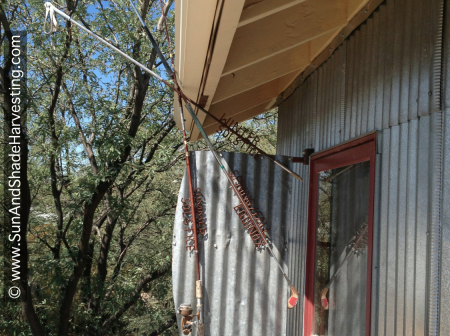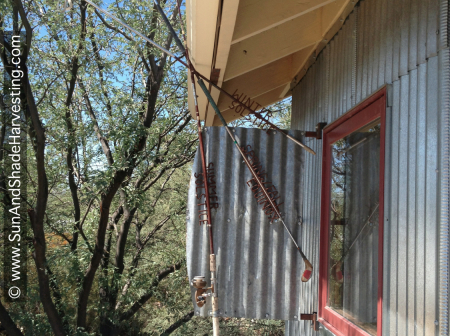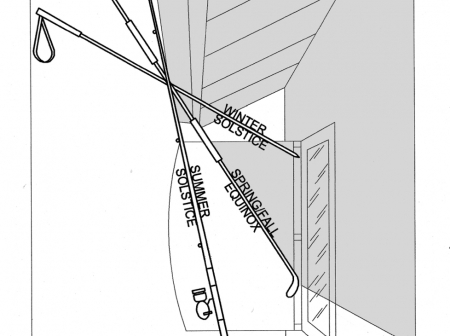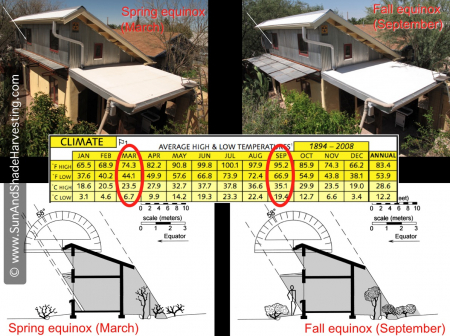I Knew It Was the Fall Equinox On September 22 Because My Sun- & Shade-Harvesting Sculpture/Calendar Told Me So!
by Brad Lancaster © 2013
www.HarvestingRainwater.com
I designed the sizing and placement of the roof overhang/gutter and windows on my garottage (one-car garage turned cottage) in Tucson, Arizona, to let the sun’s rays in when I need them for heating, and shade the sun’s rays out when I need cooling.
The sculpture shown in the photos below celebrates both the sun’s seasonally changing path and how the building was designed in relationship with that path. The sculpture also acts as a calendar, building on a long tradition of such calendars among Native American cultures in the southwestern U.S. See SinAguaSunWatchers.com for virtual tours of ancient sun calendars at some of the archaeoastronomy sites that have been surveyed in the Verde Valley of Arizona.
For more on how you can better design and live with the seasonally changing patterns of sun and shade, see:
See the new, full-color, revised editions of Brad’s award-winning books
– available a deep discount, direct from Brad:

Volume 1
Volume 1 has detailed sun & shade harvesting info on:
- Orienting buildings and landscapes to the sun
- Designing roof overhangs and awnings to optimize winter sun and summer shade
- How to choose and size windows to optimize passive heating and cooling
- Solar arcs
- Sun & shade traps
- Maintaining winter sun access with winter-solstice shadow ratios and solar rights
- Sun angles and path for any latitude and season
- How to find your way, and true north or south, with the sun and other stars
- How to place vegetation or structures to maximize natural ventilation or windbreaks
- Table comparing the energy consumed, water consumed, and carbon emitted of active and passive clothes drying, water heating, food storage & prep, lighting, heating, and cooling strategies.





